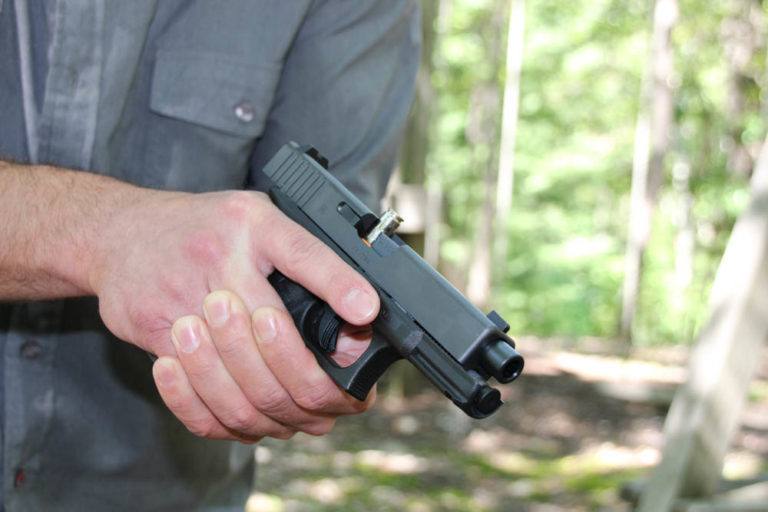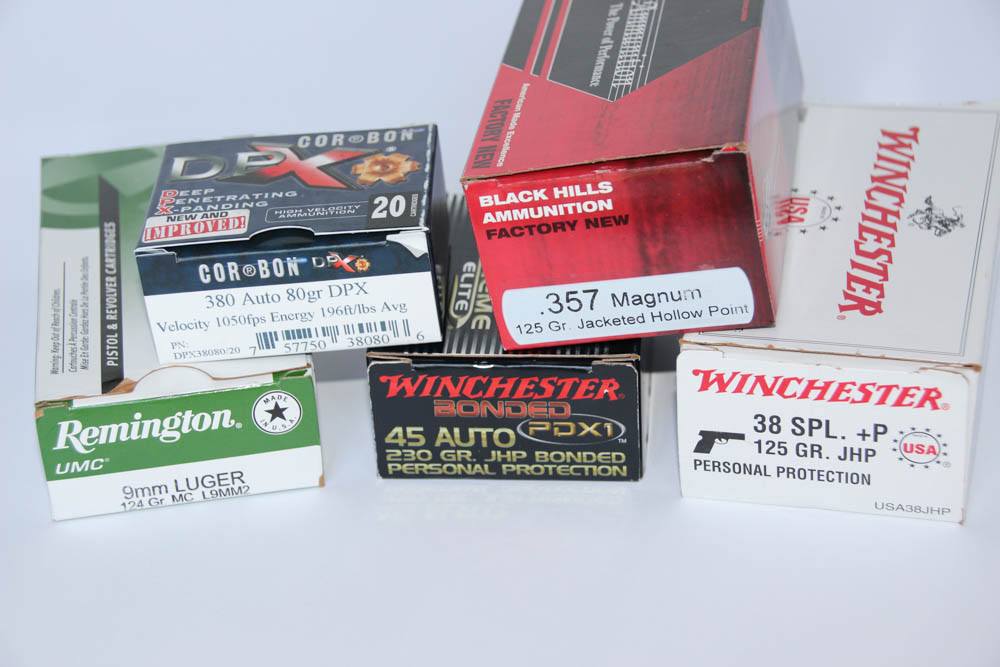
Proper ammo storage can keep your defensive ammo effective for decades. Find out how to store and maintain your ammo to avoid malfunctions and deterioration.
Modern ammunition is made with sealants to protect against the elements, but nothing lasts forever. If ammunition is properly stored, it will remain effective for decades, but if it isn’t stored properly, its lifespan can be reduced. All ammunition should be stored in a cool, dry place away from moisture and humidity.
Ammunition you carry on a daily basis is subject to being knocked about, exposed to dust, debris, lint and sweat as well as temperature changes, etc. My recommendation is to replace your carry ammunition at least annually. Just shoot the old stuff and get a new box of the ammunition you like to carry.

If ammunition looks old or corroded, don’t use it for carry purposes. There are plenty of gun owners who will gladly take old ammunition off your hands if you feel uncomfortable using it. If your ammunition gets dusty or dirty, you can clean in by wiping it down with a clean cloth. Do not use any solvents or oils on your ammunition, because this is much more likely to damage it. Even if you can’t see it, solvents and lubricants can get into your ammunition and compromise the chemicals that make up the powder and primer.
Three Types Of Ammo Malfunctions
Just as your gun can malfunction, so can your ammunition, especially if it has not been properly stored. There are three basic types of ammunition malfunctions:
- Misfire
- Hang fire
- Squib load
Misfire is when the round simply does not go off. On the range, always keep the gun pointed in a safe direction (downrange) and wait 30 seconds before you clear the objecting round. It could be that a round simply did not exit the magazine, so there was nothing in the chamber. It could also just be a hard or bad primer.
Wait 30 seconds with the gun pointed in a safe direction in case you have the second type of malfunction, a hang fire. A hang fire is a perceptible delay in the ignition of the cartridge. It might be a function of corrupted powder and the round does not go off right away. It might take as much as 8 seconds for the round to detonate and fire.
You don’t want to be waving the gun around or looking down the barrel when that happens. You also don’t want the cartridge detonating while you’re opening the chamber, because that will create shrapnel and possibly injure you. Fortunately, hang fires are very rare. I have experienced one only once, and that was with some 50-year-old French military surplus rifle ammunition, and the delay was only a split second (but still noticeable).

The last basic type of malfunction is a squib load. This is the result of an underpowered cartridge. The cartridge fires, but it will sound and feel noticeably different from a normal round. The gun will kick a lot less, and it will sound much quieter. It could be that only some of the gunpowder ignited or that there was no gunpowder in the cartridge—only the live primer.
If you experience this, cease firing immediately and inspect the barrel for any obstructions, because the cartridge might have had enough force to send a bullet halfway down the barrel and left it lodged there. If the barrel is clear, you can continue to shoot. You should never fire a gun with an obstruction in the barrel because this will damage or destroy the gun and likely cause injury to you.
Here’s another warning when it comes to ammunition. Most people who carry concealed do so with a round in the chamber. Occasionally, you will have to unload your gun—when storing or cleaning it, for example. When you reload and re-chamber a round, be conscientious of which round you are chambering. If you continually chamber the same round over and over again, the bullet will gradually and almost imperceptibly become seated deeper and deeper into the cartridge case. The result of this powder packing is that when the bullet is fired, it will generate a much higher and possibly unsafe chamber pressure. This is only a problem with semi-automatic handguns. I would not re-chamber the same round more than a couple of times. After that, use a different round.
If you find yourself in a life-threatening situation, where you have to use your concealed-carry handgun, some of these rules are significantly relaxed. If you experience a misfire under these circumstances, immediately clear the recalcitrant round and load a fresh one. With a revolver, this is much easier because all you have to do is squeeze the trigger again to rotate the cylinder and bring a fresh round in line with the barrel.
Editor’s Note: This article is an excerpt from Gun Digest Shooter’s Guide to Concealed Carry.

Next Step: Get your FREE Printable Target Pack
Enhance your shooting precision with our 62 MOA Targets, perfect for rifles and handguns. Crafted in collaboration with Storm Tactical for accuracy and versatility.
Subscribe to the Gun Digest email newsletter and get your downloadable target pack sent straight to your inbox. Stay updated with the latest firearms info in the industry.

![Best Concealed Carry Guns In 2025 [Field Tested] Wilson Combat EDC X9S 1](https://gundigest.com/wp-content/uploads/Wilson-Combat-EDC-X9S-1-324x160.jpg)


![Best 9mm Carbine: Affordable PCCs [Tested] Ruger Carbine Shooting](https://gundigest.com/wp-content/uploads/Ruger-Carbine-Shooting-100x70.jpg)
![Best AR-15: Top Options Available Today [Field Tested] Harrington and Richardson PSA XM177E2 feature](https://gundigest.com/wp-content/uploads/Harrington-and-Richardson-PSA-XM177E2-feature-100x70.jpg)
